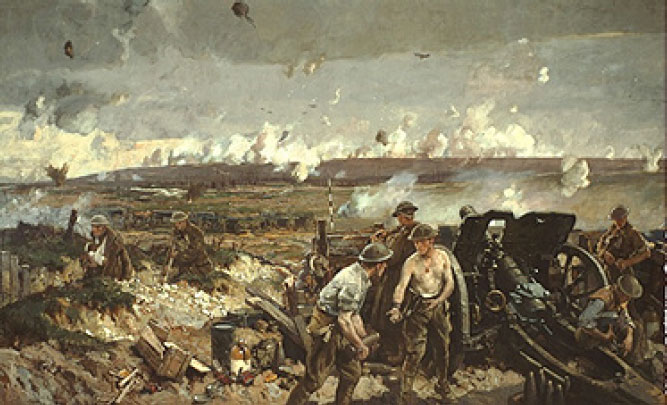Operation Vimy Ridge
This publication is available upon request in alternate formats. PDF Version
One of the major battles fought by Canadians during the First World War was the Battle of Vimy Ridge in April 1917.
Location
Vimy Ridge is in northern France near the city of Arras, about 175 kilometres north of Paris. Because it is a long, high hill (ridge), whoever held it had an advantage of being able to see everything around them and could better control the area. It was a strategic geographic location to have in war.
Mission
By the spring of 1917, Europe had been involved in the First World War for more than two-and-a-half years, with neither side making significant gains. Germany had captured Vimy Ridge early in the war and transformed it into a strong defensive position for themselves, with complex tunnel systems guarded by highly-trained soldiers with machine guns. Earlier attacks on Vimy Ridge by the British and French in 1914 and 1915 to take back the ridge were unsuccessful and had cost thousands of lives. Another major attack was planned for April 1917….this time the Canadians were tasked with capturing Vimy Ridge and getting the Germans off the ridge!
Strategy
For the first time ever, the strategy was to use all four Canadian Corps divisions – close to 100,000 soldiers – to take Vimy. The Canadians were moved to the front lines across from Vimy Ridge in late autumn 1916 to begin planning for the attack.
Plan
To succeed and crack the German fortress at Vimy Ridge, much planning was needed. Canadians spent a long cold winter preparing, training and rehearsing for the assault on Vimy. Models of the trench systems were built and soldiers were drilled on what to do.
They dug tunnels beneath the German lines and set up huge explosives to explode when the time for the attack came. Tunnel systems with train tracks, piped water, lights, and rooms to store supplies were also built. Detailed maps were given to every soldier to know where to go.
The Canadians also planned to use a tactic called the “creeping barrage”. The goal of the creeping barrage was to create a line of shellfire just in front of the Canadian troops and then keep it moving forward like a shield so that the soldiers could move behind it, across the battlefield.
Attack
The attack came on Easter Monday, April 9, 1917 – just as the snow was starting to fall. At exactly 5:30 a.m. there was a loud explosion. Artillery opened fire. The creeping barrage aimed at the German front lines and then began creeping up the ridge. All four Canadian divisions came up from their trenches and tunnels and moved closely behind the artillery. Bravery allowed them to continue forward while Germans fired at them. They charged ahead with machine guns, threw hand grenades and attacked German gunners. There were four days of intense fighting before it was over.
Result
Mission accomplished! Careful planning and the creeping barrage artillery tactic helped the Canadians to reach the German front lines to capture the ridge. The Canadians had gone shoulder to shoulder and participated together in a military battle that established their reputation as respected and skilled soldiers.
The Battle of Vimy Ridge was a success for the Canadians - but it was victory at a very heavy cost. Sadly, approximately 3,600 Canadians were killed and another 7,000 wounded, leaving those at home grieving.
Legacy
For the first time ever, all four Canadian divisions served together at Vimy Ridge. There were business men, ranchers from the west, rodeo performers, fishermen, lumbermen, farmers, students and more. The battalion commander later explained his feelings as he watched the Canadian troops that morning: “It was Canada from the Atlantic to the Pacific on parade. I thought then…that in those few minutes, I witnessed the birth of a nation.” Canadians at home felt united, yet still very much grieved the tragic loss of so many men, sons, fathers and brothers. A striking large white marble monument called the Canadian National Vimy Memorial was built to stand at the site at Vimy. It commemorates that important First World War battle, and is a reminder of the 11,285 Canadian soldiers killed in France who have no known graves. Their names are engraved into the monument’s stone walls. Let’s make sure their sacrifice is remembered.
- Date modified:
